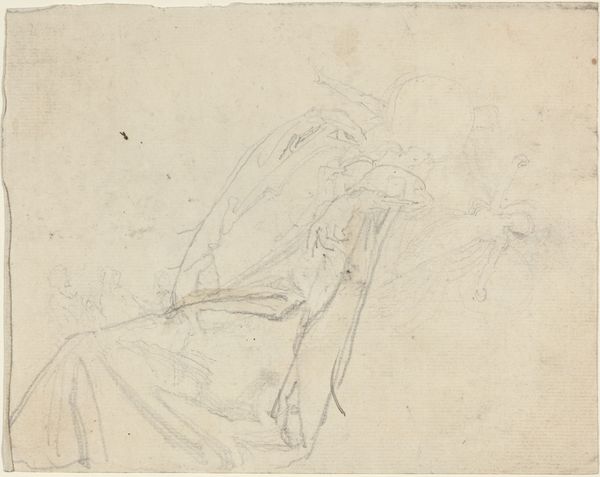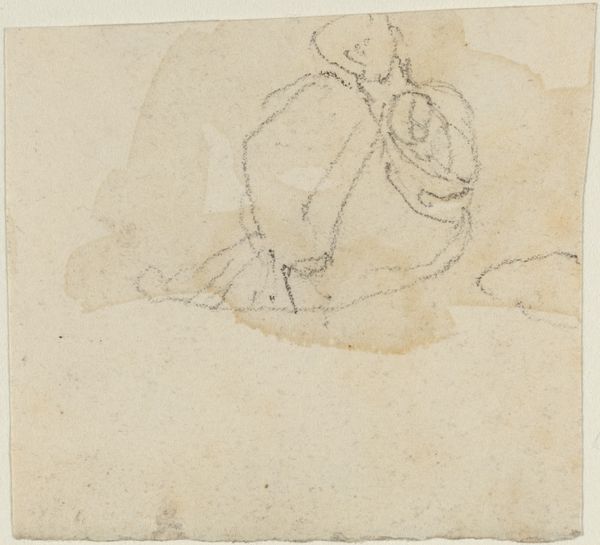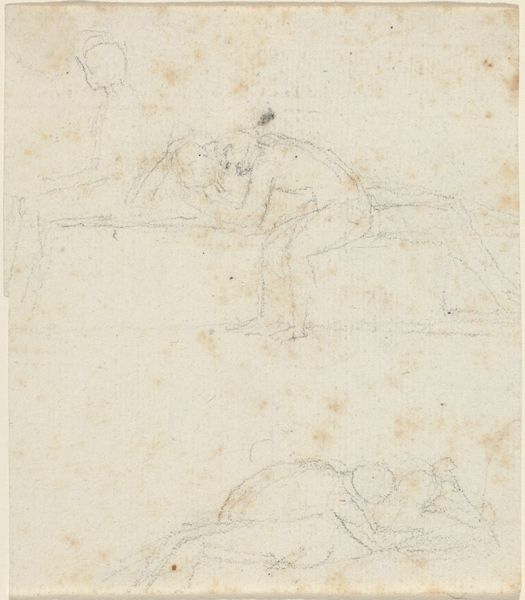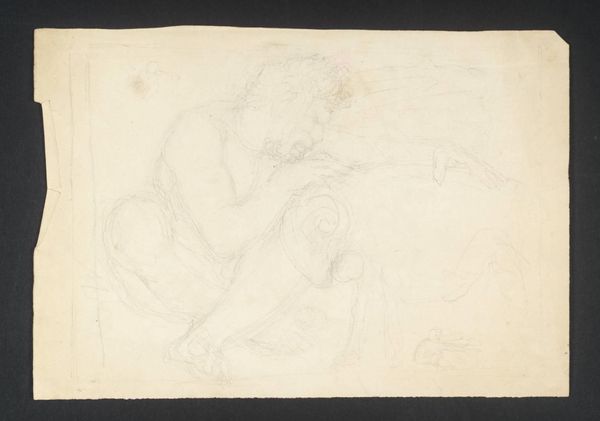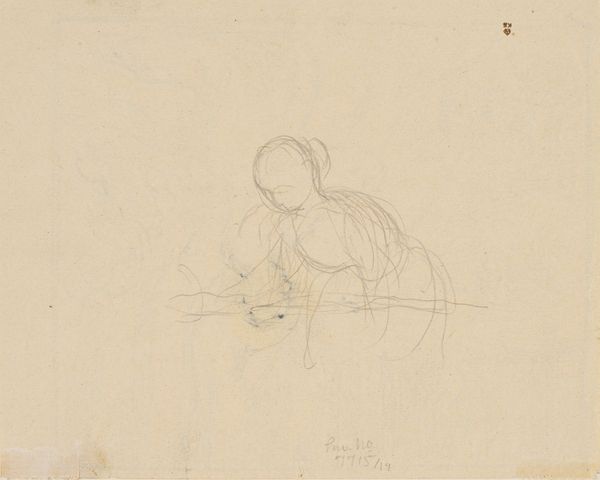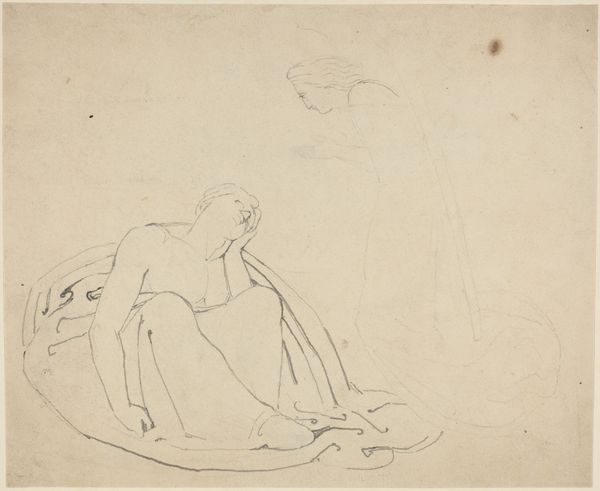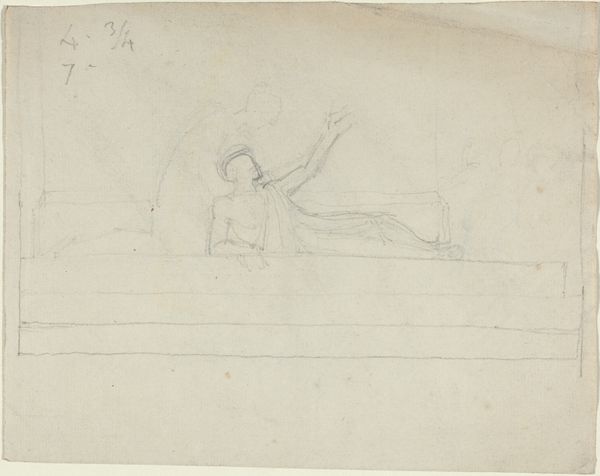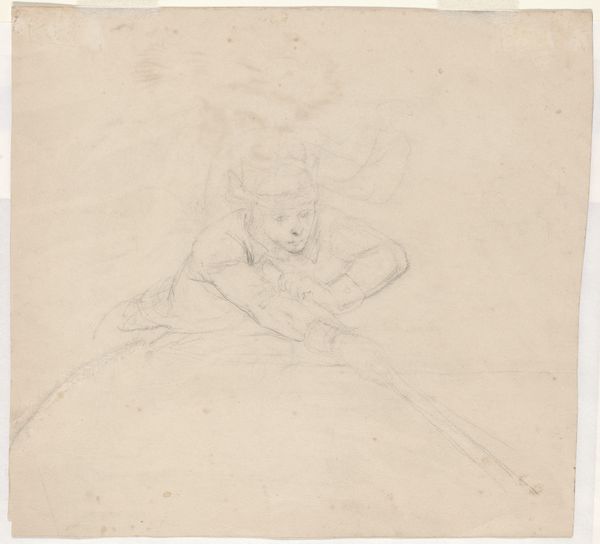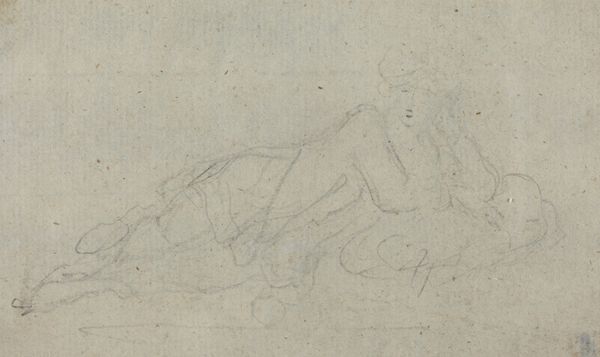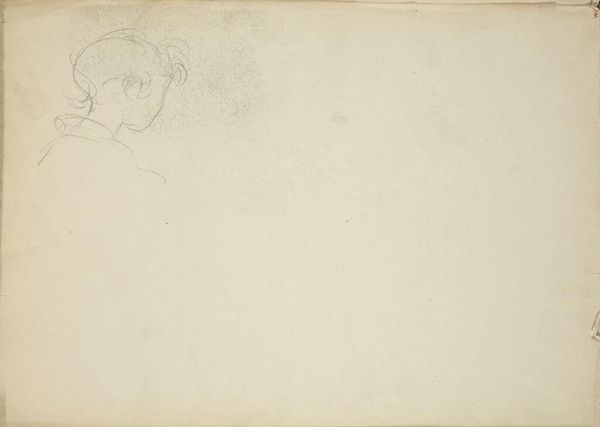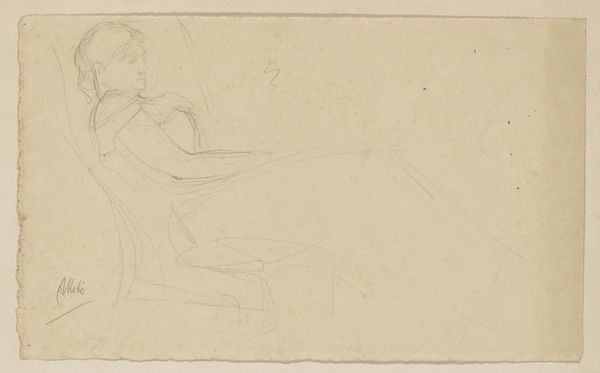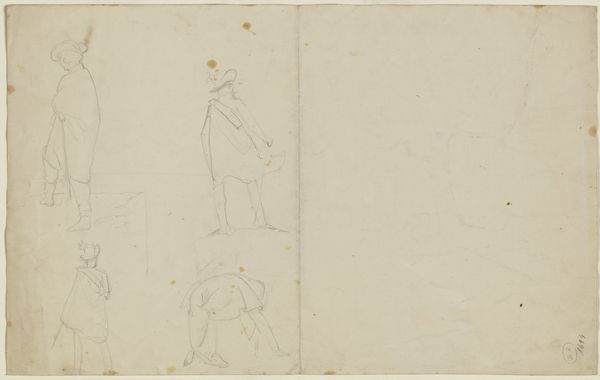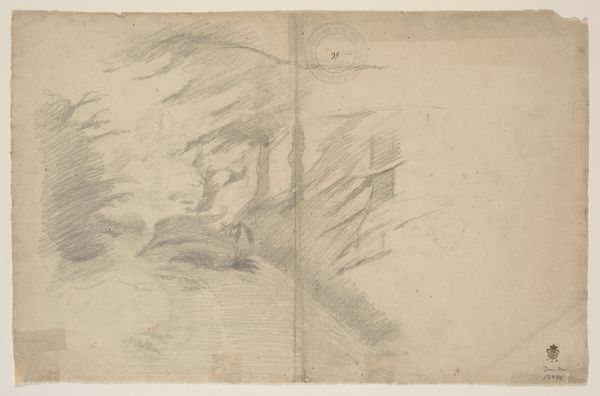
drawing, paper, pencil
#
portrait
#
drawing
#
figuration
#
paper
#
pencil
#
line
#
realism
Dimensions: 280 mm (height) x 590 mm (width) (bladmaal)
Editor: This is "Figurstudie," a pencil and paper drawing by Joakim Skovgaard, dated between 1856 and 1933. The faint lines create a subdued and intimate feeling. What do you see in this piece, particularly in its form and structure? Curator: Primarily, I am drawn to the artist’s adept use of line to delineate form. Observe how the subtle variations in pressure and weight give dimension to the figure, conveying the illusion of three-dimensionality on a two-dimensional plane. Do you notice how the economy of line contributes to the overall effect? Editor: Yes, it's almost like the artist is suggesting form with as few strokes as possible. There are some smudges, I assume the artist had to correct the line a few times. Curator: Precisely. These corrections, or pentimenti, become integral to the aesthetic value. They are the markings that give it rhythm, leading the eye around the form. I’m curious, what compositional strategies did Skovgaard adopt to convey the illusion of depth? Editor: Well, the darker lines appear closer and the faint ones recede, which seems pretty standard, but effective. Also, the figure isn't complete. Would that suggest it might be just a draft? Curator: It is in the incompleteness, the open form, that the drawing achieves its unique tension. Skovgaard has activated the surrounding space by refusing closure. Do you see the tension between the parts of the figures in order to emphasize his structural elements? Editor: I think so. The open space definitely adds something. I initially saw it as unfinished, but now I think that incomplete feeling makes you focus on each line. Curator: A successful analysis. Considering its form, one understands that the open lines give it such strength and energy. Editor: I'll look at sketches differently going forward.
Comments
No comments
Be the first to comment and join the conversation on the ultimate creative platform.
